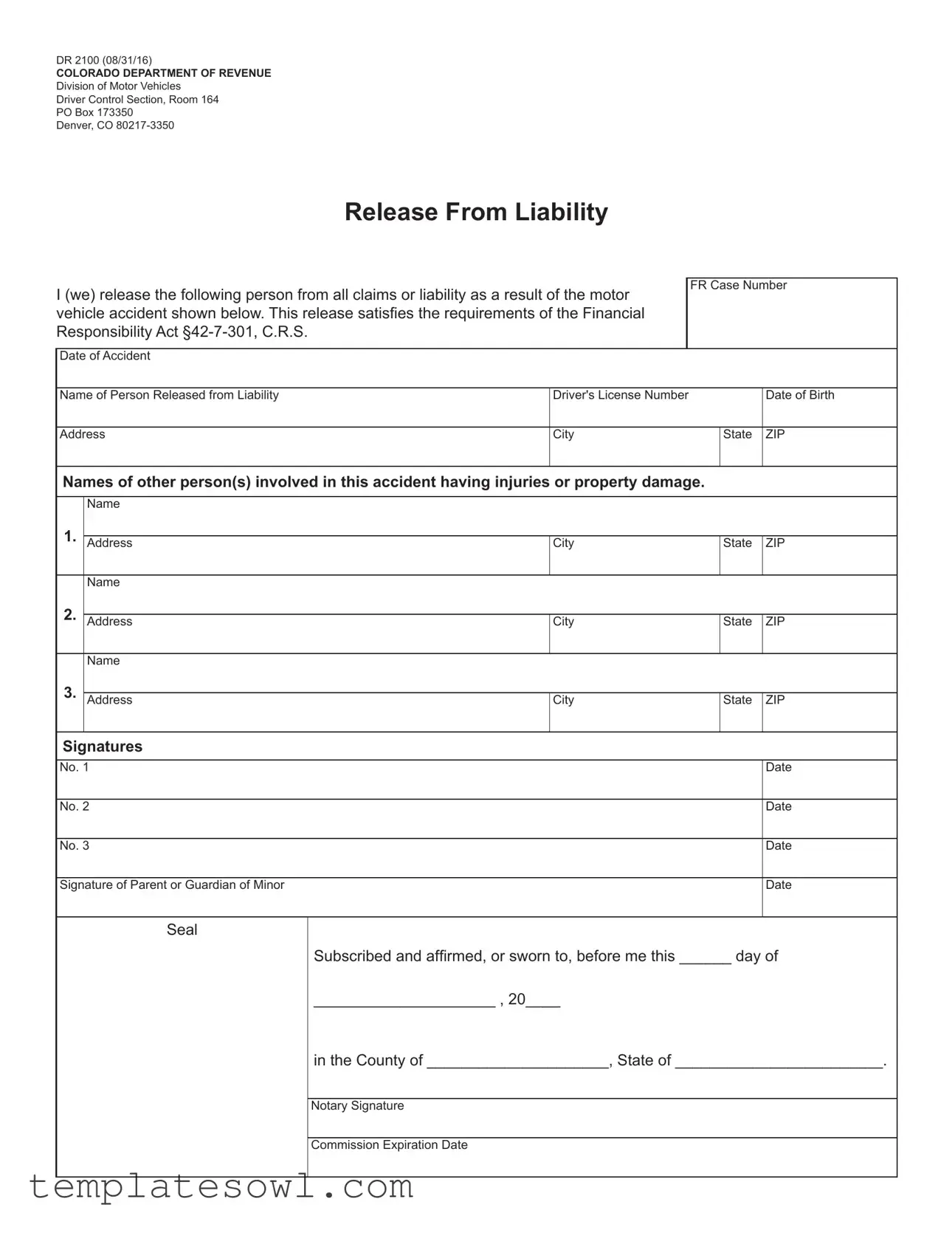Completing the Colorado DR 2100 form requires careful attention to ensure that all information is accurate and complete. One common mistake is failing to provide the correct date of the accident. This detail is crucial, as it establishes the timeline for the incident and any subsequent claims. Errors in the date, whether typographical or due to misunderstanding, can lead to complications during the processing of the release.
Another frequent error is omitting the financial responsibility case number. This number is essential for identifying the specific financial responsibility case related to the accident. Without it, the release may not be processed correctly or might be delayed, which can create additional frustrations for all parties involved.
People often overlook accurate personal details when listing the individual being released from liability. This includes ensuring that the name matches their official identification exactly, and that the driver’s license number and date of birth are correct. Inconsistencies in this information can lead to legal disputes or the invalidation of the release.
Another mistake involves the section dedicated to listing other persons involved in the accident. Providing incomplete information about these individuals, such as missing addresses or names, can complicate matters, especially if injuries or damages are later claimed. It’s vital to include complete and accurate details so that all parties are clearly identified.
Signatures are a critical part of the form and often contain errors. Individuals may neglect to sign in the appropriate places, or their signatures may not match the names as they appear on the identification. Ensuring that all required signatures are present and consistent is crucial for the validity of the document.
Moreover, another common issue is failing to have the form properly notarized. The notary section must be completed and signed; otherwise, the release may not hold legal weight. This step is often overlooked, but its importance cannot be overstated.
Many people also forget to indicate the expiration date of the notary commission. This can lead to questions about the validity of the notarization itself. Notaries have expiration dates for their commissions, and an expired notary seal can render the form ineffective.
Lastly, individuals may inadequately understand the implications of the release. It is important to be aware that signing this document releases the named party from liability for any future claims related to the accident. Therefore, taking the time to read the form and understand its significance before signing is essential to avoid unintended consequences.

